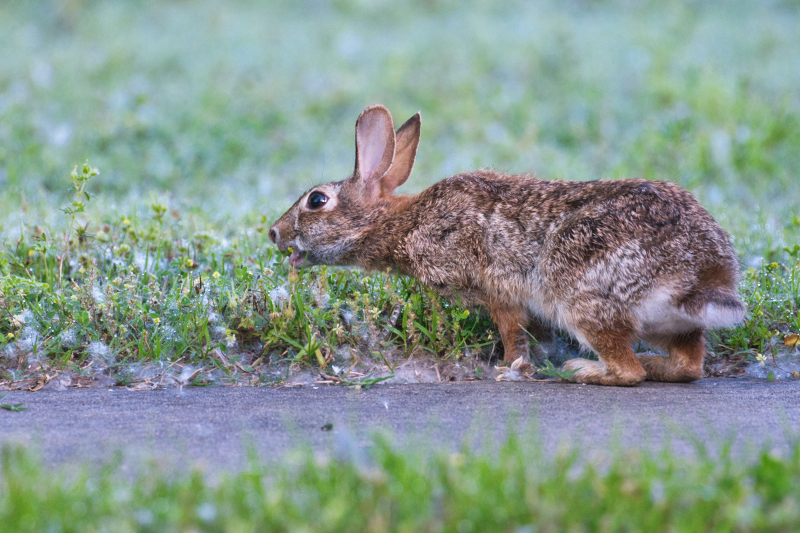I spotted this cottontail rabbit reaching for a plant near the Sequoyah National Wildlife Refuge office on May 15, 2019. I had no idea the area would be underwater just days later.
The timing makes this photo special. Additionally, it captures a moment of normal wildlife behavior before the flood changed everything at the refuge. The office area was completely submerged afterward. Staff had to relocate to Vian, Oklahoma School temporarily.

Finding Wildlife During Uncertain Times
I was getting ready to leave when I noticed movement near the restroom area. The rabbit was busy foraging, stretching to reach vegetation just off the paved path. However, I knew any sudden movement would send it running.
I used my vehicle as a photography blind. This technique works well for nervous animals like cottontail rabbits. I parked at a safe distance and waited quietly for the rabbit to resume its normal behavior.
The rabbit’s body language told me it felt secure. It moved naturally, focused on finding food rather than watching for threats. For example, it turned its back to me several times while reaching for different plants.
Cottontail Rabbit Behavior You Should Know
Cottontail rabbits are most active during dawn and dusk hours. This crepuscular behavior helps them avoid predators and extreme heat. Therefore, early morning offers the best photography opportunities.
Their diet changes with the seasons. In spring and summer, they eat fresh green plants and grasses. During winter, they switch to bark, twigs, and dried vegetation. This adaptability helps them survive in various habitats across North America.
Recovery After the Flood
The refuge has made remarkable progress since 2019. Most areas have reopened after extensive cleanup efforts. Staff and volunteers worked tirelessly to restore damaged facilities and trails.
Wildlife populations show signs of recovery too. Animals like this cottontail rabbit demonstrate nature’s resilience. They adapted by moving to higher ground during the flood, then returned as conditions improved.
